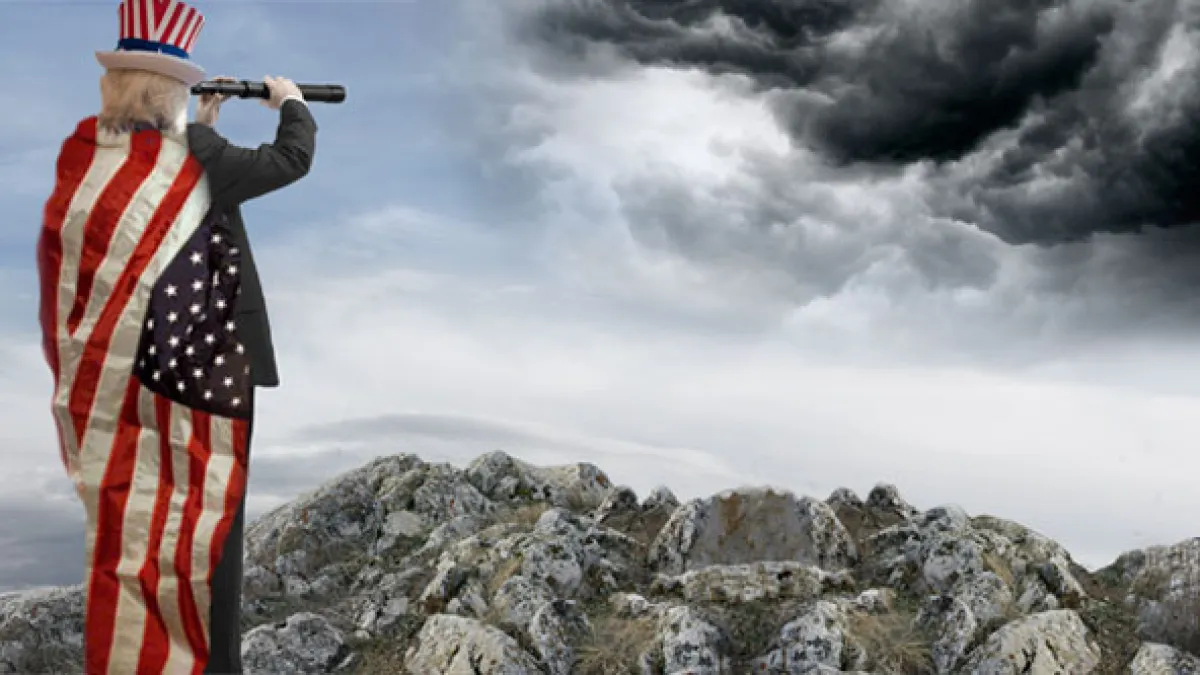
A closely watched measure of how Americans are feeling about their personal finances and the future of the economy shows they are growing increasingly worried amid persistent inflation, a rapidly developing trade war and a plummeting stock market.
The University of Michigan’s index of consumer sentiment registered 57 at the end of March, falling 12% in just a month while marking the third straight monthly decline. The index is down more than 30% since November 2024, with members of both major political parties expressing worsening outlooks.
“This month’s decline reflects a clear consensus across all demographic and political affiliations,” said Joanne Hsu, director of the Michigan survey. “Republicans joined independents and Democrats in expressing worsening expectations since February for their personal finances, business conditions, unemployment, and inflation.”
The darkening outlook is shared not just across the political spectrum but across the economic one, as well, with more high-income respondents expressing doubts about the year ahead (see the chart below). “Even the rich are worried now,” noted Heather Long of The Washington Post.
Long noted that during the Biden administration, many people said the economy was bad but their personal situation was good, while under the Trump administration, it seems that people are reporting that both elements are bad. “Under Trump 2025, people at all income levels are worried they will be worse off in a year,” she wrote. “This is the type of situation that causes people to really pull back on spending. This is what is different than 2023 or 2024.”
Persistent inflation is one of the key factors in the decline. Consumers see higher inflation on the horizon, with year-ahead expectations rising to 5.0% in March, up seven-tenths of a percentage point since February. Long-term inflation expectations rose to 4.1%, up six-tenths from the month before. Two out of three people in the Michigan survey also expect unemployment to rise in the coming year — the highest reading since 2009.
A potential pullback in spending and investment, along with the prospect of tariff-driven price hikes and higher inflation, has spooked Wall Street. Stocks had another awful day Friday, with the S&P dropping nearly 2% and the Dow Jones Industrial Average falling over 700 points, or nearly 1.7%.
Core inflation rises: A separate report from the Commerce Department showed that consumer prices increased as expected in February, with the PCE price index rising 0.3% on a monthly basis and 2.5% on a yearly basis. The annual figure is above the Federal Reserve’s 2.0% target rate, and roughly the same level since November, suggesting that topline inflation remains at slightly higher levels than the central bank is targeting.
However, the core PCE index, which leaves out volatile food and fuel prices to provide a stronger sense of the underlying trend, came in a bit hotter than expected. Core PCE was up 0.4% month-to-month and 2.8% year-over-year, raising new concerns that inflation is starting to move higher.
Fears of stagflation: Some analysts are even worried that stagflation — a dreaded combination of high inflation and high unemployment — could be brewing, though the economy is a long way from that right now, given the relatively low unemployment rate of 4.1%.
“It shows some preliminary signs of stagflationary pressures,” Gennadiy Goldberg, head of U.S. rates strategy at TD Securities, told The New York Times. “This reinforces the narrative that growth may be becoming a little bit more sluggish even as inflation is starting to show some signs of perking up before we really get the brunt of the trade disruptions.”
Economists at Bank of America share those concerns, saying this week that “modest stagflation” is the likely outcome for the U.S. this year, with rising prices from the tariffs hampering growth. “The reason that we’re a little bit prone to stagflation right now — especially the inflation part — is that our starting point is not very favorable,” Aditya Bhave, a senior U.S. economist at Bank of America, told Politico. “You can see in inflation expectations that consumers are already anticipating it to a certain degree — at least in certain measures — and that could become self-fulfilling.”
David Beckworth, an economist at the libertarian Mercatus Center, said Friday that whatever negative sentiments Americans may be feeling presently, things could get a lot worse if President Donald Trump’s burgeoning trade war goes into full swing. “The American psyche, scarred by the pandemic inflation surge, is not ready for 'Liberation Day' and other price shocks coming their way,” he said, referring to April 2, the day when a new round of Trump’s tariffs are scheduled to take effect. “This is playing with 🔥🔥.”